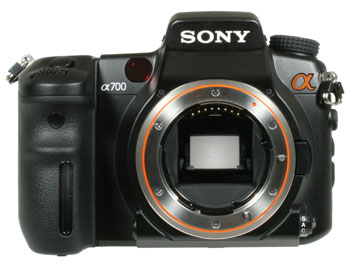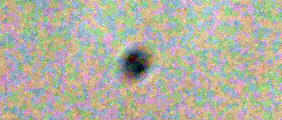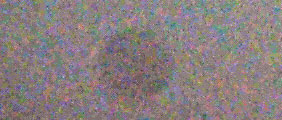Sony Alpha DSLR-A700 final production review
-
-
Written by Gordon Laing
Sony Alpha DSLR-A700 anti-dust
Sony Alpha DSLR-A700 features : Lenses and viewfinder / Screen and menus / Sensor and processing / Anti dust / Anti shake
Sony Alpha DSLR-A700 features continued…
Lenses and viewfinder / Screen and menus / Sensor and processing / Anti dust / Anti shake
The Sony Alpha A700 features two means to actively combat dust entering the body: first the low pass filter has an anti-static coating to reduce the chance of dust sticking, and secondly the platform used for anti-shake can be vibrated at a higher frequency in an attempt to shake-free any foreign particles. Like all DSLRs, there’s also a manual cleaning option which opens the mirror and shutter while you use a blower. The sensor vibration takes place automatically every time you power the camera down, so it doesn’t impact startup time.
 |
At Cameralabs we believe it’s important to test the anti-dust facilities of DSLRs. Dust is a major bugbear of DSLR owners and anti-dust capabilities have finally become a feature all manufacturers are including on their new models. At this point though it’s important to note the evaluation of anti-dust dust systems can never be as controlled or consistent as other tests. After all, there’s no way of counting the number or type of dust particles which currently lie within a body, nor any way to introduce a consistent number of test particles for it to subsequently get rid of. As such it’s impossible to conclude one system is categorically better than another at eliminating dust.
Just because something can’t be scientifically measured though, doesn’t mean it should be glossed-over or ignored in a review. Anecdotal evidence can be a valuable indicator and by gathering it from a number of sources over time we can build up a picture of how effective, or ineffective a system performs. That’s our belief at Camera Labs, so for the record here’s what we found.
Following earlier anti-dust tests we removed the lens from the A700 and left the body face-up indoors for five minutes, then for a further five minutes outside in a light breeze. While there’s no way of knowing exactly how much dust got into the body, we’re pretty confident such activity would have resulted in many visible dust marks on other DSLRs.
The easiest way to spot dust marks is to manually focus a lens to infinity and shoot a plain white surface from about 30cm away. It’s revealing to try this at different apertures, as the bigger the f-number, the sharper and more defined any dust marks will become. So the ultimate torture test would be at, say, f22, although to be fair it’s important to also test at the more common apertures used day-to-day.
After switching the camera on and off twice to run the anti-shake process, we photographed a white surface as described with the A700 and a 16-80mm lens at 50mm and at each aperture setting, then opened the images in Photoshop and zoomed-in to 100% for close examination using a calibrated Eizo CG210 monitor.
With the aperture at f8 or below, dust marks were essentially invisible on our test shot, but at f11 and smaller, six marks gradually become better defined until they were clearest at f22. We’ve selected the darkest of the six marks for reproduction here.
The first pair of images below show a 100% crop from the original image taken at f22, alongside a version with Photoshop’s Levels applied to make the mark more obvious. The mark on the original is relatively faint at f22, but still clear on areas of flat colour, like white walls or blue skies.
Sony Alpha DSLR-A700 dust example at f22 | ||
 |  | |
| 100% crop measuring 282×120 pixels | 100% crop measuring 282×120 pixels with Levels | |
We noted the position of the mark on the f22 sample and selected an identical area on the f8 image for reproduction below. The image below left is taken from the original and shows the exact same area as the f22 sample above. Luckily the smaller depth of field has rendered the mark into a larger, fainter patch which is essentially invisible. To prove it really is there though, we once again applied Photoshop’s Levels for the image below right; even in this extreme example though, the mark remains quite faint.
Sony Alpha DSLR-A700 dust example at f8 | ||
 |  | |
| 100% crop measuring 282×120 pixels | 100% crop measuring 282×120 pixels with Levels | |
So like all DSLRs we’ve tested, the Sony A700 won’t remove all dust particles by itself, although in our example above, most marks were effectively rendered invisible by the depth of field at the most common apertures below f11. If you regularly shoot with smaller apertures like f16 and f22 though, you’ll need to keep an eye open for dust and probably use a blower to get rid of it.




